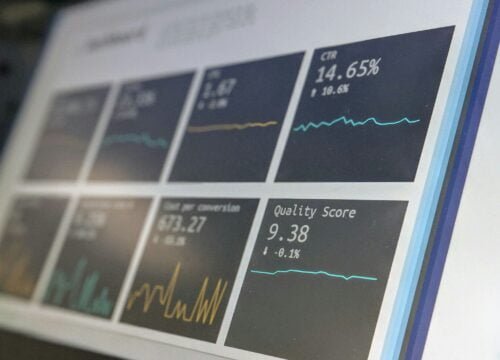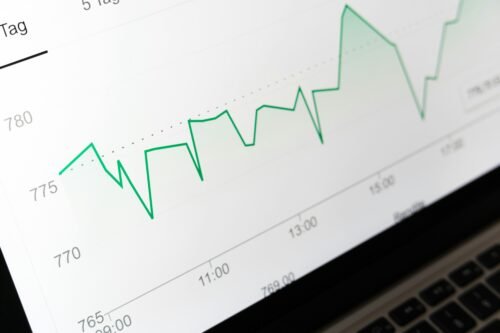In the realm of business operations, having accurate and reliable forecasts is crucial for decision-making and strategizing. This is where statistical forecasting comes into play, a method that utilizes historical data and mathematical techniques to predict future trends. By analyzing patterns, associations, and correlations within large datasets, businesses can effectively anticipate market demand, sales volumes, and production requirements. In this article, we will explore the fundamentals of statistical forecasting and its significance in facilitating informed decisions for organizations across industries.
Definition of Statistical Forecasting
Meaning of Statistical Forecasting
Statistical forecasting is a method used to predict future events or outcomes based on historical data and statistical models. It involves the use of mathematical algorithms and statistical techniques to analyze past patterns and trends in data, and generate forecasts for future time periods. This approach to forecasting is widely accepted and utilized in various industries and sectors due to its objective nature and ability to provide accurate predictions.
Role of Statistical Forecasting
The primary role of statistical forecasting is to assist organizations in making informed decisions and plans by providing them with reliable and quantifiable estimates of future events. By analyzing historical data, statistical forecasting enables businesses to identify patterns and relationships between variables, and use this information to project future outcomes. This helps organizations optimize their operations, streamline their supply chains, and improve overall efficiency.
Applications of Statistical Forecasting
Statistical forecasting has a wide range of applications across different industries. In the retail sector, it is used to forecast sales and demand for various products, enabling businesses to effectively manage inventory and plan promotional activities. In finance, statistical forecasting is utilized to predict stock prices, exchange rates, and interest rates, aiding investors in making informed investment decisions. Other industries, such as manufacturing, healthcare, and transportation, also benefit from statistical forecasting in areas such as production planning, resource allocation, and capacity management.
Types of Statistical Forecasting Methods
Time Series Analysis
Time series analysis is a statistical technique used to forecast future values based on past observations collected over time. It involves studying the sequential relationship between time-related data points to identify patterns, trends, and seasonal variations. Various methods, such as moving averages, exponential smoothing, and autoregressive integrated moving average (ARIMA) models, are commonly employed in time series analysis to generate accurate forecasts.
Regression Analysis
Regression analysis is a statistical modeling technique used to establish a relationship between a dependent variable and one or more independent variables. In the context of statistical forecasting, regression analysis is used to predict future values of the dependent variable based on the values of the independent variables. This method is particularly useful when there is a linear or non-linear relationship between the variables and can be applied to a wide range of forecasting scenarios.
Data Mining Methods
Data mining methods involve the extraction of useful patterns, trends, and insights from large datasets. In the context of statistical forecasting, data mining techniques such as clustering, association rule mining, and neural networks are used to identify hidden relationships and patterns in the data. These methods are particularly valuable when dealing with complex and unstructured data, allowing organizations to uncover valuable insights that can be used for forecasting purposes.

Time Series Analysis
Definition and Concept
Time series analysis is a statistical method used to analyze and predict time-based data. It involves studying the sequential relationship between data points collected over successive time intervals. By identifying patterns, trends, and seasonality in the data, time series analysis enables forecasters to make accurate predictions about future values and trends.
Components of Time Series
Time series data typically consists of four components: trend, seasonality, irregularity, and cyclicity. The trend component represents the long-term pattern or direction of the data, indicating whether it is increasing, decreasing, or staying constant over time. Seasonality refers to recurring patterns or fluctuations that occur within a specific time period, such as daily, weekly, or monthly. Irregularity represents random and unpredictable fluctuations in the data, while cyclicity refers to longer-term patterns or cycles that occur at irregular intervals.
Methods for Time Series Analysis
Various statistical methods and models are commonly used in time series analysis. Moving averages, for example, help smooth out short-term fluctuations in the data and provide a clearer picture of the underlying trend. Exponential smoothing models, on the other hand, assign different weights to past observations, giving more importance to recent data points. Autoregressive integrated moving average (ARIMA) models are widely used for forecasting, as they combine autoregressive (AR), moving average (MA), and differencing techniques to capture trend, seasonality, and irregularity in the data. Additionally, advanced techniques, such as state space models and neural networks, are also employed for more accurate and complex time series forecasts.
Regression Analysis
Introduction to Regression Analysis
Regression analysis is a statistical method used to model the relationship between a dependent variable and one or more independent variables. It is a powerful tool for forecasting, as it enables forecasters to predict future values of the dependent variable based on the values of the independent variables. Regression analysis considers the nature of the relationship between variables, such as linear or non-linear, and calculates the best-fitting line or curve that represents this relationship.
Types of Regression Analysis
There are several types of regression analysis techniques, each suited for different forecasting scenarios. Simple linear regression is used when there is a linear relationship between the dependent and independent variables. Multiple regression, on the other hand, incorporates multiple independent variables to predict the dependent variable. Polynomial regression is used to capture non-linear relationships by fitting a polynomial curve. Logistic regression is employed when the dependent variable is binary or categorical. These different types of regression analyses allow forecasters to choose the most appropriate method based on their data and forecasting requirements.
Steps in Regression Analysis
Regression analysis typically involves several steps. First, the data for the dependent and independent variables is collected and organized. Next, the relationship between the variables is determined by plotting the data and conducting statistical tests. Then, the regression model is constructed by estimating the regression coefficients that minimize the difference between the predicted and actual values. The model is then evaluated for its accuracy and validity using various statistical measures. Finally, the model is utilized to generate forecasts for future time periods, considering the values of the independent variables.

Data Mining Methods
Overview of Data Mining
Data mining is a process of discovering patterns, relationships, and insights from large datasets. It involves extracting valuable information from complex and unstructured data to support decision-making and forecasting. Data mining techniques utilize statistical and mathematical algorithms to analyze data, identify patterns, and make predictions. These techniques are widely used in statistical forecasting to uncover hidden relationships and generate accurate forecasts based on historical data.
Data Mining Techniques
Various data mining techniques are employed in statistical forecasting. Clustering involves grouping similar data points together based on their characteristics, allowing forecasters to identify segments or patterns within the data. Association rule mining examines relationships or associations between different variables, helping identify dependencies or correlations that can be used for forecasting. Neural networks, modeled after the human brain, are used to learn patterns and relationships within complex datasets and make predictions based on this knowledge. These techniques, along with others such as decision trees and genetic algorithms, provide valuable tools for data exploration and forecasting.
Application in Statistical Forecasting
Data mining methods are particularly valuable in statistical forecasting due to their ability to handle large and complex datasets. By analyzing historical data, data mining techniques can uncover hidden patterns and relationships that lead to accurate forecasts. For example, in the retail industry, data mining can uncover purchasing trends, customer preferences, and seasonality patterns, enabling businesses to optimize their inventory management and plan sales promotions effectively. In financial forecasting, data mining can analyze historical market data and factors influencing stock prices to predict future market trends. Overall, data mining methods provide valuable insights and information that support accurate and reliable statistical forecasting.
Factors Affecting Statistical Forecasting
Accuracy of Historical Data
The accuracy and quality of historical data play a crucial role in statistical forecasting. To generate reliable forecasts, it is essential to have accurate and complete historical data that is representative of the future conditions. Inaccurate or incomplete data can lead to biased forecasts and poor decision-making. Therefore, organizations must ensure the accuracy and integrity of their historical data by implementing rigorous data collection and validation processes.
Data Quality
The quality of data used for statistical forecasting is vital for obtaining accurate results. Data quality refers to the completeness, consistency, and relevance of the data. Inaccurate or unreliable data can significantly impact the forecasting process, leading to incorrect predictions and suboptimal decisions. To ensure data quality, organizations must invest in data cleansing and validation procedures, including data verification, data normalization, and error detection and correction.
Demand Variability
The variability of demand is another factor that affects statistical forecasting. Demand patterns can change due to various factors such as seasonality, market trends, economic conditions, and customer preferences. High demand variability makes it challenging to accurately predict future demand and may require the use of advanced forecasting techniques and models. It is crucial to consider the factors that contribute to demand variability and incorporate them into the forecasting process to improve accuracy and reliability.

Benefits of Statistical Forecasting
Improved Decision Making
Statistical forecasting provides organizations with valuable insights and predictions that support informed decision-making. By utilizing historical data and statistical models, organizations can forecast future outcomes, identify trends, and make data-driven decisions. Accurate forecasts enable businesses to optimize their operations, plan inventory levels, allocate resources effectively, and respond proactively to market changes. This improves overall decision-making and increases the likelihood of achieving business goals and objectives.
Cost Reduction
Statistical forecasting helps organizations reduce costs by optimizing their operations and resource allocation. By accurately predicting future demand and sales, businesses can avoid overstocking or understocking inventory, minimizing holding and carrying costs. This also allows organizations to optimize their production schedules, reduce waste and excess capacity, and improve overall supply chain efficiency. Additionally, statistical forecasting helps organizations identify cost-saving opportunities, such as optimizing procurement and logistics processes, leading to significant cost reductions.
Increased Efficiency
Statistical forecasting enhances overall operational efficiency by enabling organizations to make better use of their resources. By accurately predicting demand and sales, businesses can align their production, procurement, and distribution processes accordingly. This leads to improved resource allocation, reduced lead times, and better inventory management. Additionally, statistical forecasting enables organizations to minimize stockouts and avoid lost sales, leading to improved customer satisfaction. Overall, increased efficiency through statistical forecasting allows organizations to optimize their processes, reduce waste, and achieve operational excellence.
Challenges in Statistical Forecasting
Data Availability and Quality
One of the main challenges in statistical forecasting is the availability and quality of data. Organizations often face difficulties in obtaining sufficient and relevant historical data for accurate forecasting. Additionally, data from different sources may vary in quality, consistency, and completeness, leading to challenges in data integration and validation. Organizations must invest in data management processes and systems to ensure the availability of accurate and high-quality data for forecasting purposes.
Forecast Accuracy
Forecast accuracy is a significant challenge in statistical forecasting. While statistical methods provide reliable estimates based on historical data, they are not immune to errors and inaccuracies. The accuracy of forecasts depends on the quality of historical data, the selection of appropriate statistical models, and the assumptions made in the forecasting process. External factors, such as changes in market conditions or unforeseen events, can also impact forecast accuracy. To address this challenge, organizations must continuously evaluate and improve their forecasting models and techniques, incorporating feedback and making adjustments as necessary.
Unforeseen Factors
Statistical forecasting may encounter challenges due to unforeseen factors that impact future events or outcomes. These factors could include changes in market conditions, economic recessions, natural disasters, political unrest, or technological advancements. Such events can disrupt established patterns and relationships in the data, leading to inaccurate forecasts. To mitigate the impact of unforeseen factors, organizations must regularly assess and monitor market conditions, stay informed about external factors, and use scenario planning techniques to account for uncertainty and risks.
Comparison with Other Forecasting Methods
Statistical Forecasting vs Judgmental Forecasting
Statistical forecasting differs from judgmental forecasting in its approach and reliance on data and statistical models. Judgmental forecasting relies on the subjective judgment and expertise of individuals or groups to make predictions. While it can be useful in situations where there is limited historical data or significant variability, judgmental forecasting is prone to bias and subjectivity. Statistical forecasting, on the other hand, utilizes objective data analysis and statistical models to generate forecasts. It is based on historical patterns and relationships in the data, providing more reliable and accurate predictions.
Statistical Forecasting vs Qualitative Forecasting
Qualitative forecasting involves capturing opinions and insights from experts or stakeholders to make predictions. It can be useful in situations where historical data is limited or non-existent, or when the forecasted variable is subjective and difficult to quantify. However, qualitative forecasting lacks the objectivity and quantifiability of statistical forecasting. Statistical forecasting, by using data analysis and mathematical models, provides more accurate and reliable forecasts based on historical patterns and trends. It is generally preferred when sufficient historical data is available and when objective and quantitative forecasts are required.
Examples of Statistical Forecasting
Case Study 1: Predicting Sales for a Retail Store
In this case study, statistical forecasting is used to predict sales for a retail store. Historical sales data, along with relevant variables such as promotions, seasonality, and economic factors, are collected and analyzed. Time series analysis techniques, such as moving averages and exponential smoothing, are applied to identify patterns and trends in the data. A suitable forecasting model, such as ARIMA, is then selected based on its accuracy and fit to the data. The model is used to generate forecasts for future time periods, allowing the retail store to optimize its inventory levels, plan promotions, and allocate resources effectively.
Case Study 2: Forecasting Inventory Levels for a Manufacturer
In this case study, statistical forecasting is used to predict inventory levels for a manufacturing company. Historical sales data, production data, and other relevant variables are collected and analyzed. Regression analysis is utilized to establish the relationship between sales and production, taking into account factors such as seasonality and market trends. The regression model is then used to forecast future inventory levels based on projected sales and production volumes. This enables the manufacturer to optimize its production schedules, manage inventory levels efficiently, and avoid stockouts or excess inventory.
In conclusion, statistical forecasting is a valuable method for predicting future events and outcomes based on historical data and statistical models. It plays a crucial role in various industries and sectors by providing accurate predictions, supporting informed decision-making, and optimizing operations. Various techniques such as time series analysis, regression analysis, and data mining methods are employed in statistical forecasting to analyze historical data, identify patterns, and generate forecasts. While statistical forecasting offers numerous benefits, there are challenges related to data availability and quality, forecast accuracy, and unforeseen factors. By understanding these challenges and implementing appropriate strategies, organizations can leverage statistical forecasting to improve efficiency, reduce costs, and make better business decisions.
